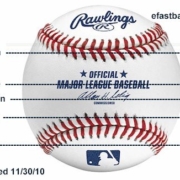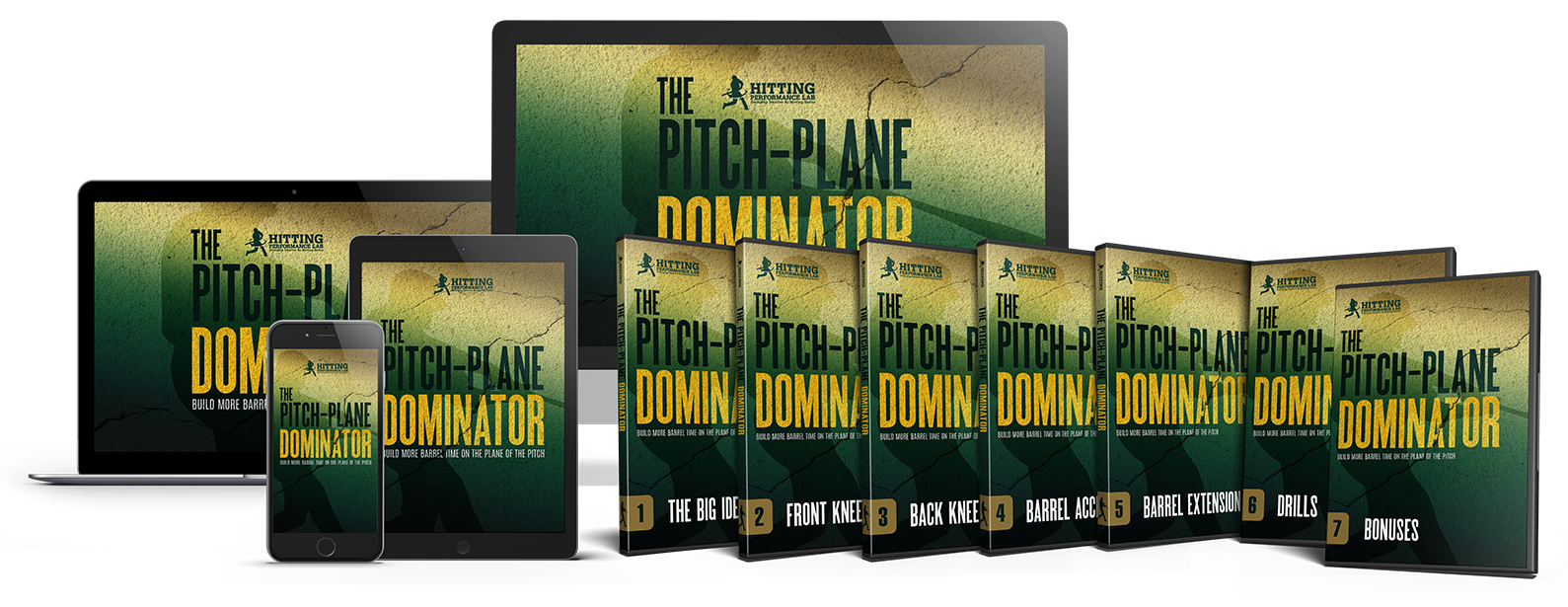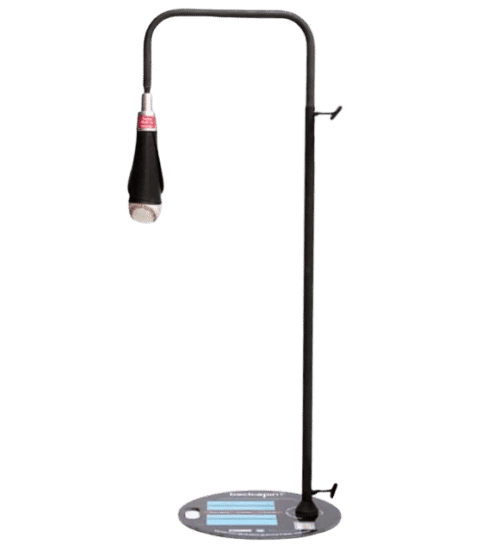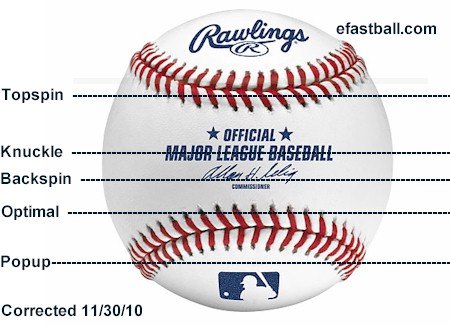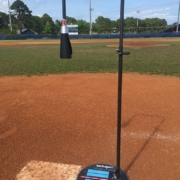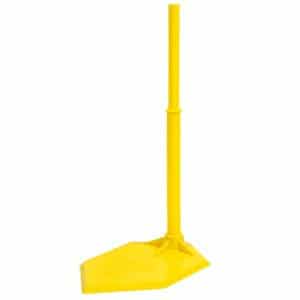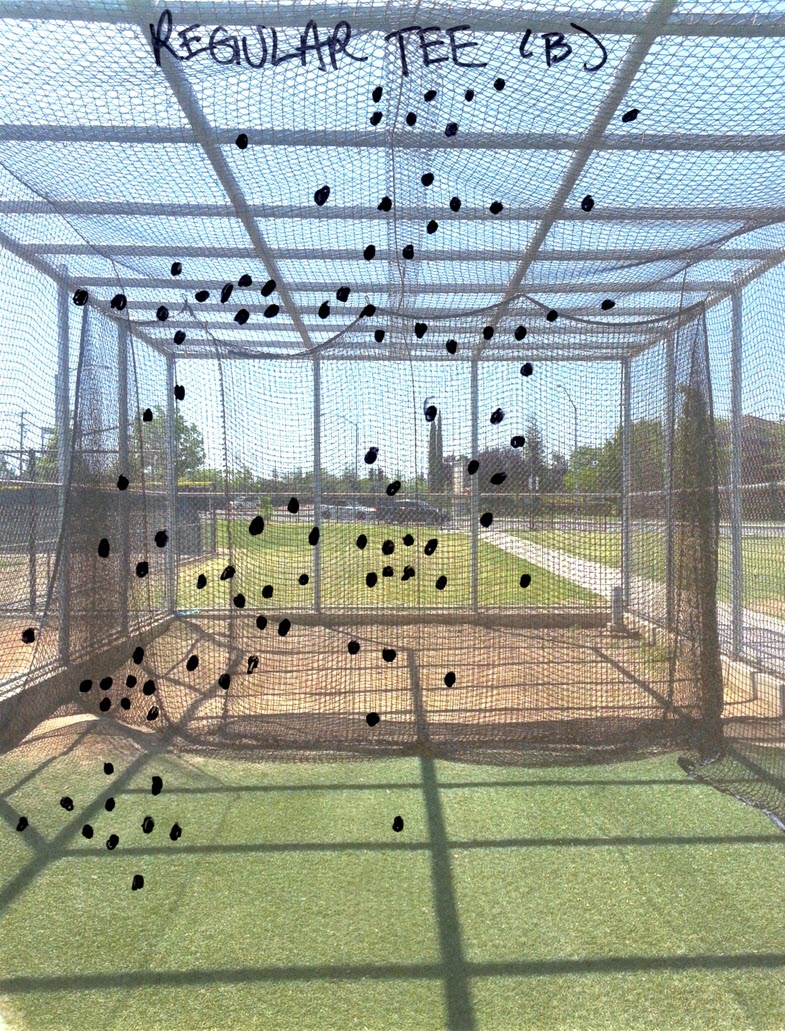Discover this inverted baseball, fastpitch, or slow pitch softball professional batting tee. Learn about the best hitting tee trainer drills to hit more line drives instead of ground balls. Check out this batting tee review and grab a 10% OFF coupon code…
Baseball Batting Mechanics Risk Hiding In Your Batting Tee
This is Part-1 of a 3-part baseball batting mechanics video series coming straight out of the Pitch-Plane Dominator online video mini-course…
Sick of struggling to reduce your hitters ground balls, swing and miss strikeouts, and non-productive weak fly balls? This simple 4-Step online video mini-course (7-modules total) will help hitters weighing less than 100-pounds, barrel the ball more consistently. Dramatically decrease ground balls, strikeouts, and weak fly balls (no matter the pitch location or speed) by applying human movement rules validated by science.
If you haven’t already, then CLICK the Link below to…
- Part 1 – [You Are Here] Baseball Batting Mechanics Risk Hiding In Your Batting Tee
- Part 2 – Dominate The Pitch Plane Like Joey Votto (Baseball Swing Slow Motion Analysis
- Part 3 – Baseball Hitting Tips For Youth: Discover The One-Swing-Fits-All Secret
In the baseball batting mechanics video, Backspin Batting Tee inventors, Taylor & Jarrett Gardner are going to dive into…
- Anatomy of ‘on path bottom half’
- Why are pitchers taught to keep the ball down in the zone? And,
- How to train hitting the bottom half…
CLICK HERE for an interview post I did with Taylor Gardner in 2015.
Anatomy of ‘On Path Bottom Half’
Should the barrel be level to the ground during the swing? Should it be down to the ball? Should it be up to the ball?
Baseball pitchers stand on a mound (if regulation) set up to 10-inches. If we have a 6-foot pitcher with an overhand release, let’s say his arm adds another foot-in-a-half, then we have about a 8.5 foot above flat ground release point. In addition to the target being a squatting catcher between 45-60 feet away.
The imaginary line connecting the pitcher’s release point to the catcher’s glove is what I like to call the Pitch-Plane, or plane of the pitch.
In fastpitch softball, the Pitch-Plane isn’t quite so drastic, but because of Gravitational Forces, the ball has to travel in an arc nevertheless.
Our objective as coaches is to get baseball batting mechanics to match the plane of the incoming pitch with the barrel.
You can also see from the eFastball.com graphic that line drives and productive balls in the air are hit using the bottom half of the ball.
Why are Pitcher’s Taught to Keep the Ball Down in the Zone?
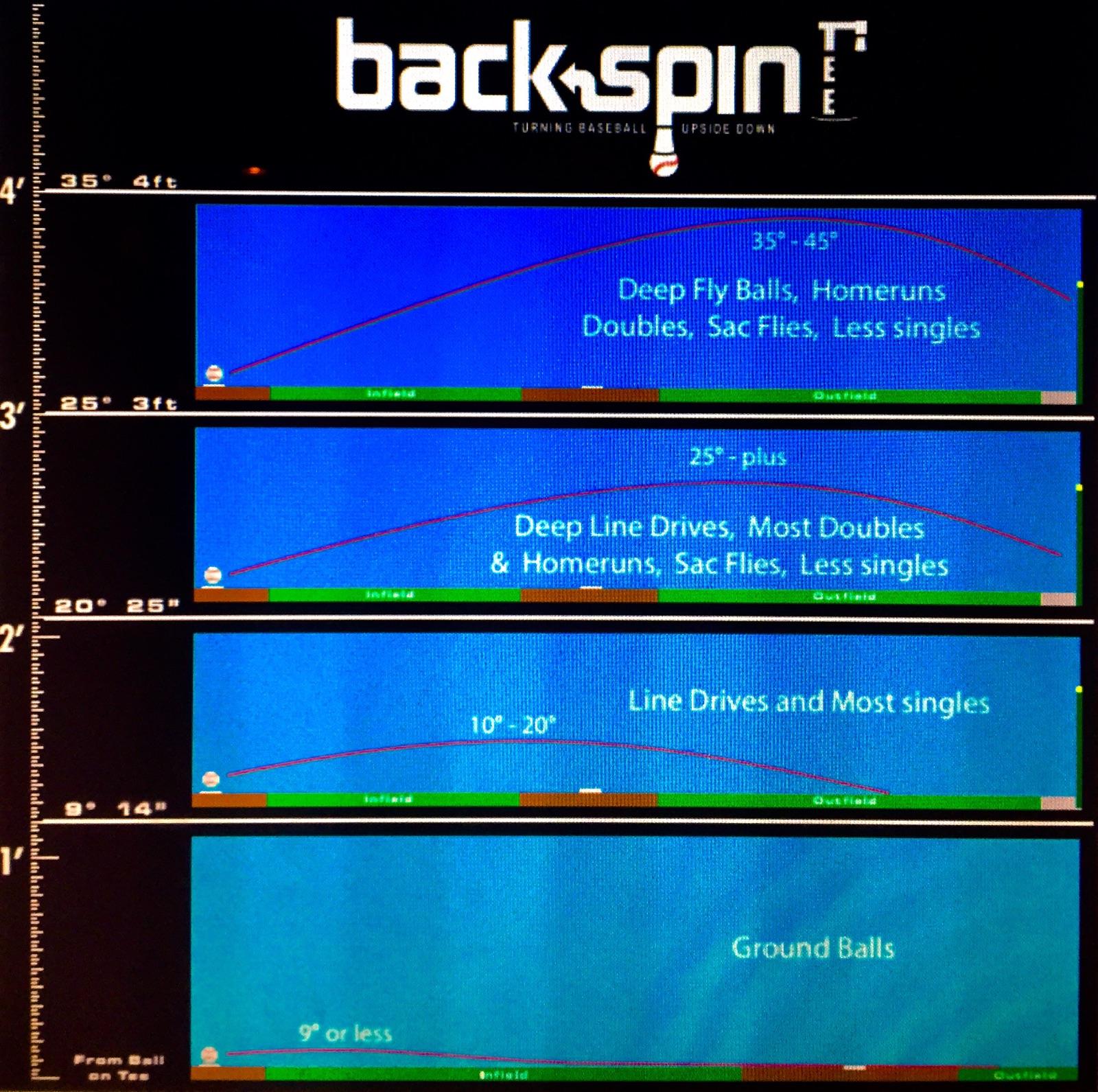
This baseball batting mechanics chart illustrates the importance of backspin on a batted ball. The higher the degree, the more backspin being created. Photo courtesy: BackSpinTee.com
Pitchers keep the ball down in the zone to get hitters striking the top half of the ball. And to create an element of deception.
Pitchers know that ground balls are outs 95% of the time in High School. In college and professional baseball, ground balls are outs 98-99% of the time.
The reality is, a 90-mph fastball drops 4 feet before it gets to the catcher. This equates to about a 5-degree downward trajectory. To the hitter, the ball may seem “flat”, but Gravitational Forces are instantly at work pulling the ball down after the pitcher releases it.
That’s only a fastball. In baseball, we can see up to a 20-degree downward pitch plane when the pitcher throws a breaking ball!
The other thing that’s happening immediately after the pitcher’s release, is the ball starts to slow down because of a myriad of factors, a couple being Gravitational Forces, and the humidity (or lack thereof) in the air.
In other words, the ball may be leaving the pitcher’s hand at 90-mph, but by the time it reaches the catcher’s glove, it’s lost maybe 4 to 6-mph.
How to Train Hitting the Bottom Half
Taylor Gardner told me a story about when his hitting mentor Matt Nokes was telling him of when Hank Aaron, shortly after retiring, was ‘touring’ MLB ballparks taking batting practice and playing home run derby.
Hank Aaron wound up crossing paths with Matt Nokes, where a young Nokes asked him what he was trying to do when he hit. Hank Aaron shared that he was always attempting to hit the bottom half of the baseball.
Traditional batting tees can promote baseball batting mechanics that hit the top half, especially with younger hitters, because they generally fear hitting the tee and knocking it over.
This can have a cascade effect, mechanically speaking, causing a hitter to swing down on the ball.
The BackSpin Tee turns the traditional tee upside down…literally. Try and swing up or down on a BackSpin Tee and you’ll hit the rubber tee cone, miss the ball completely, and/or get a weak result. Instant feedback. Ineffective outcomes.
The BackSpin Tee promotes ‘On Path Bottom Half’.

